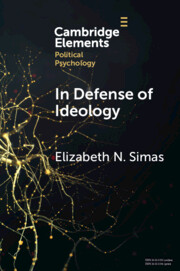Element contents
In Defense of Ideology
Published online by Cambridge University Press: 05 April 2023
Summary
- Type
- Element
- Information
- Series: Elements in Political PsychologyOnline ISBN: 9781009228169Publisher: Cambridge University PressPrint publication: 11 May 2023

